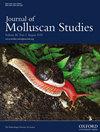Shedding light on a species complex within the genus Goniodoridella Pruvot-Fol, 1933 (Nudibranchia: Goniodorididae), with the description of three new species
IF 1.2
4区 生物学
Q2 MARINE & FRESHWATER BIOLOGY
引用次数: 0
Abstract
Goniodoridella Pruvot-Fol, 1933 is a genus of small nudibranchs found in the Indo-Pacific Ocean. Currently, the genus includes only two described species, the widely distributed type species Goniodoridella savignyi Pruvot-Fol, 1933 and G. borealis Martynov, Sanamyan & Korshunova, 2015, which is found in the northern Sea of Japan. However, because of the presence of a group of cryptic species, the known geographic range of G. savignyi may have been overestimated, while the species richness of the genus may be underestimated. In the current study, we examined specimens from Australia, the Philippines and Russia that were identified as G. savignyi, G. borealis and an undescribed species. Detailed analyses of the external morphology and internal anatomy of the specimens were carried out, as well as scanning electron micrography of the radula and the labial cuticle. Photographs of the penial spines were taken under a light microscope. DNA sequence data for selected mitochondrial and nuclear markers were obtained, allowing the inclusion of the genus Goniodoridella in molecular phylogenetic analyses for the first time. Our results support the monophyly of the genus Goniodoridella and confirm the existence of a species complex of which the type is G. savignyi. The new species G. geminae n. sp., G. serrata n. sp. and G. unidonta n. sp. are described.揭示了1933年goniooridella Pruvot-Fol属的一个物种复群(裸鳃亚目:gonioorididae),并描述了三个新种
Goniodoridella Pruvot-Fol, 1933是在印度洋-太平洋发现的一个小型裸鳃属。目前,该属只包括两个已被描述的种,即广泛分布的模式种Goniodoridella savignyi Pruvot-Fol, 1933和G. borealis Martynov, Sanamyan &;Korshunova, 2015年,发现于日本海北部。然而,由于一组隐种的存在,已知的地理范围可能被高估,而属的物种丰富度可能被低估。在目前的研究中,我们检查了来自澳大利亚,菲律宾和俄罗斯的标本,这些标本被鉴定为G. savignyi, G. borealis和一个未被描述的物种。对标本进行了详细的外部形态和内部解剖分析,并对radula和唇角质层进行了扫描电镜检查。在光学显微镜下拍摄了阴茎棘的照片。获得了选定的线粒体和核标记的DNA序列数据,首次将Goniodoridella属纳入分子系统发育分析。我们的研究结果支持Goniodoridella属的单系性,并证实了其类型为G. savignyi的物种复合体的存在。描述了新种G. geminae n. sp.、G. serrata n.和G. unidonta n. sp.。
本文章由计算机程序翻译,如有差异,请以英文原文为准。
求助全文
约1分钟内获得全文
求助全文
来源期刊

Journal of Molluscan Studies
生物-动物学
CiteScore
3.00
自引率
8.30%
发文量
36
审稿时长
3 months
期刊介绍:
The Journal of Molluscan Studies accepts papers on all aspects of the study of molluscs. These include systematics, molecular genetics, palaeontology, ecology, evolution, and physiology. Where the topic is in a specialized field (e.g. parasitology, neurobiology, biochemistry, molecular biology), submissions will still be accepted as long as the mollusc is the principal focus of the study, and not incidental or simply a convenient experimental animal. Papers with a focus on fisheries biology, aquaculture, and control of molluscan pests will be accepted only if they include significant advances in molluscan biology. While systematic papers are encouraged, descriptions of single new taxa will only be considered if they include some ‘added value’, for example in the form of new information on anatomy or distribution, or if they are presented in the context of a systematic revision or phylogenetic analysis of the group.
 求助内容:
求助内容: 应助结果提醒方式:
应助结果提醒方式:


